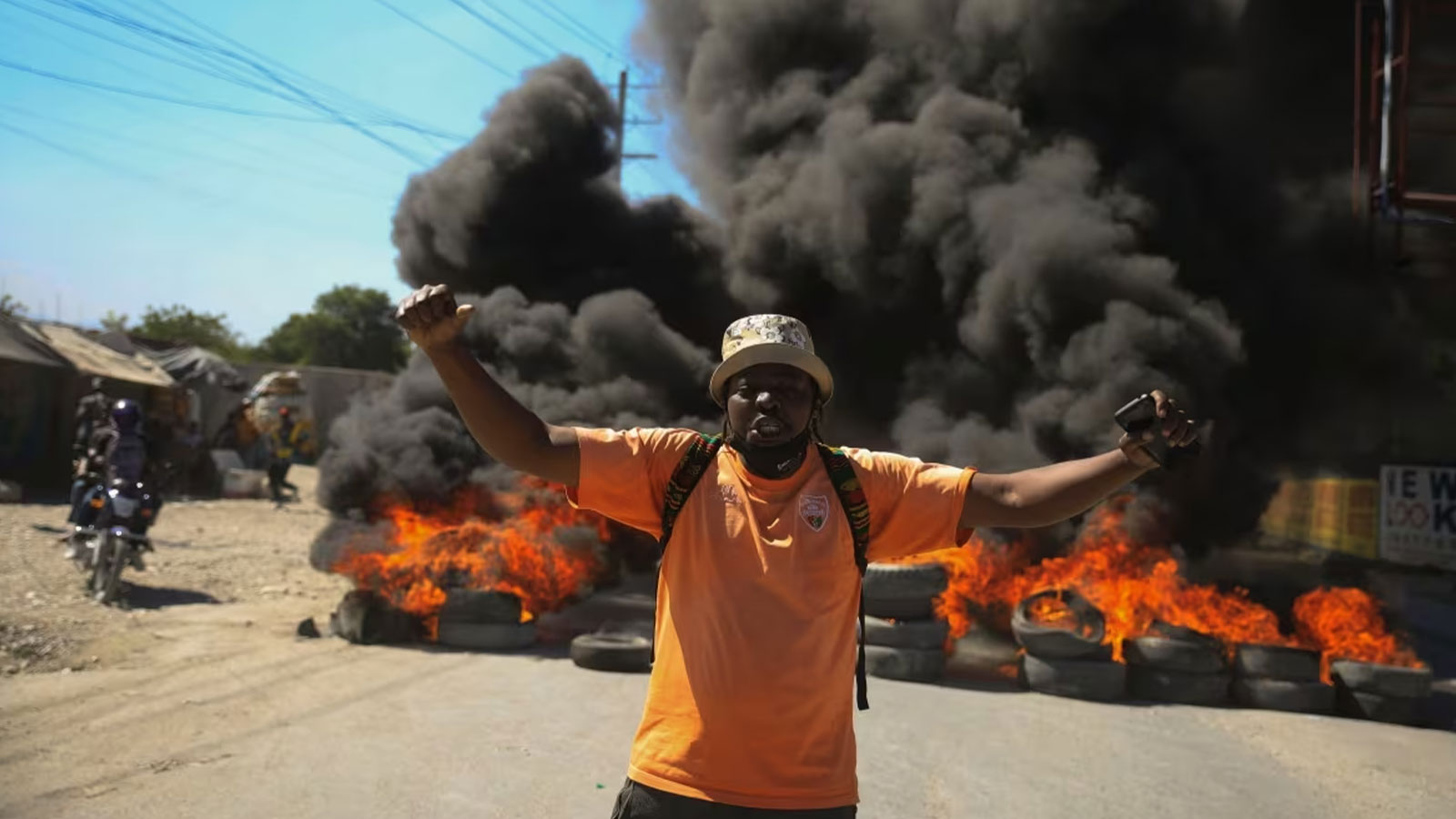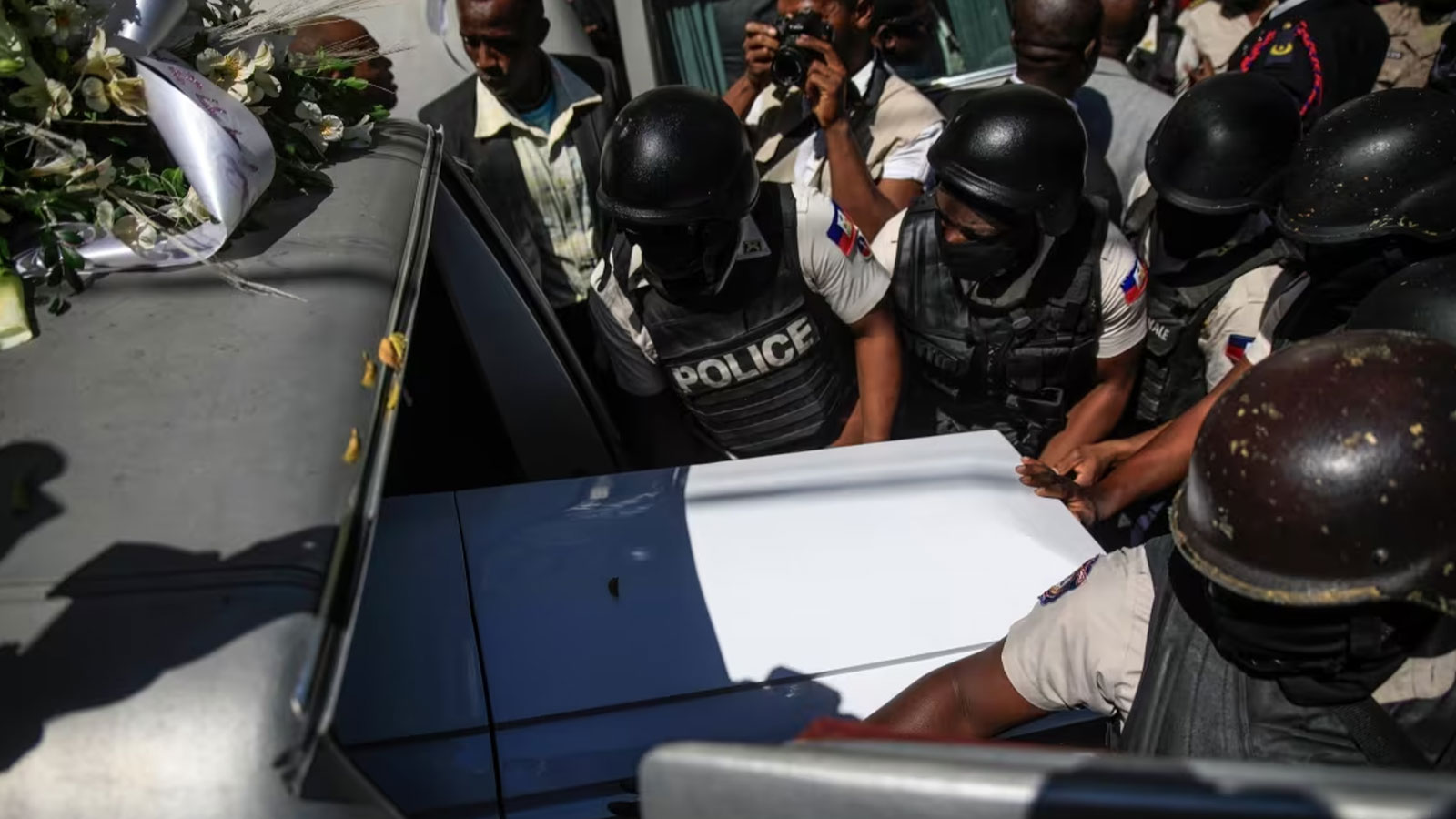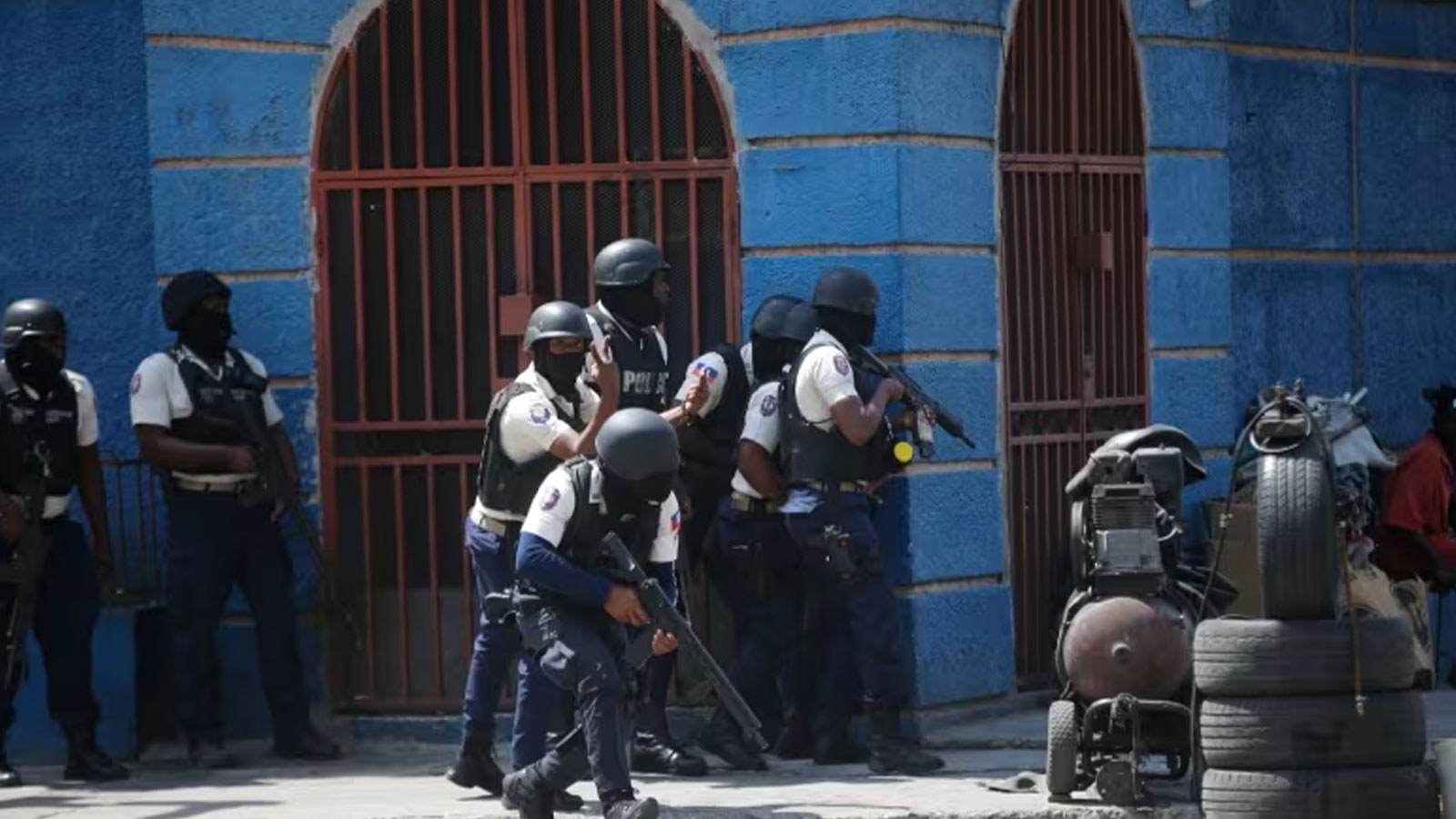One Afghan vet calls potential mission ‘a nightmare waiting for a place to happen’.
An unstoppable force collides with an immovable object in Ottawa this week.
The (normally) unstoppable force is direct and heavy U.S. pressure on Canada — in this case, to lead some kind of mission to save Haiti. The immovable object is a Canadian government and military determined to avoid being dragged into the Haitian quagmire.
The Trudeau government did not take the kind of direct approach that then-prime minister Jean Chrétien did when the Americans invited Canada to join the invasion of Iraq in 2003. Instead, it stalled, dissembled, ragged the puck and offered alternatives until the Biden administration finally appeared to ease up on its pressure campaign.
“I think they’ll continue to talk about ways they can continue to support, from a humanitarian assistance perspective, the people of Haiti and Haitian national security forces,” said White House spokesperson John Kirby in a media briefing for journalists covering President Joe Biden’s visit to Ottawa this week.
“As for multinational force or anything like that, I don’t want to get ahead of the conversation.”
Kirby gave the impression that no such intervention will happen in the near future.
“If there’s a need for that, if there’s a place for that, that’s all going to have to be worked out with the Haitian government and with the UN,” he said.
Canada doesn’t have the numbers
If intervention is off the table for now, that would come as a relief to Canada’s Armed Forces. Chief of the Defence Staff Gen. Wayne Eyre said this month he doubted Canada could pull off such a mission right now, given its commitments in Europe.
The mission is exactly the kind that professional militaries try to avoid.
It involves shadowy enemies who don’t wear uniforms and mix freely with a civilian population. The fighting almost certainly would take place in densely-populated slums. The conflict is marked by shifting factions, alliances and interests that confuse Haitians, never mind outsiders. And there’s a very real risk that, once in, any outside force would be hard-pressed to extricate itself from Haiti without triggering a new breakdown in civil order.
Retired lieutenant general Steve Bowes ran Canadian Joint Operations Command, the headquarters charged with planning such interventions. He said a fight against Haiti’s gangs would be much like the army’s long war with the Taliban.
“For all intents and purposes, the gangs act as insurgents,” he told CBC News. “So it’s not dissimilar.”
He agrees with Gen. Eyre’s assessment that Canada doesn’t have the manpower to pull it off.
I’m not going to hand over my son to a bunch of Canadian troops who come looking for him. I’m going to protect him and hide his weapons. And they know this terrain, they know their shanty towns and they know the city better than we ever will.– David Redpath, urban warfare expert
“To be able to sustain a number in Latvia, it’s the rule of three — you have one deployed, you have one training and you have one back home and reconstituting,” he said.
He pointed out that Canada’s military is about 10,000 personnel short of full strength, due to persistent problems with recruitment and retention.
“The chief is probably looking at that and saying, ‘Hey, I doubt that we have the ability to actually sign up for this kind of mission,'” Bowes said.
“It’s not like people are going to be receiving the force with open arms. There are people there that would not want — economically, socially — to see an international force like this.
“And by the way, they’re also much better armed than they have been in the past.”
Gang leaders with big ambitions
Port-au-Prince is a mountainous city built around a bay, with about three million inhabitants and some of the world’s most crowded shantytowns. It is controlled by a patchwork of dozens of gangs, several of which have grouped together into larger alliances such as G9 and GPep.
The country’s biggest gangleaders — people like Jimmy “Barbecue” Cherizier of G9, Vitel’homme Innocent of Kraze Barye, and “Izo” of the 5 Seconds gang — control hundreds of foot soldiers and large arsenals. Many have personal connections to Haiti’s political and business elite.

Gang leader Jimmy ‘Barbecue’ Cherizier, seen here with members of his G9 gang alliance, began his career as a police officer before becoming the most feared enforcer of PHTK rule. (The Associated Press/The Canadian Press)
While former policeman Cherizier presents himself as a revolutionary and a Robin Hood figure, he has ambitions of becoming president and sometimes appears in the trademark white suit of Haiti’s political class. Izo, meanwhile, prefers to present himself as a rapper with his own video production company.
But all of the gang leaders live off the proceeds of kidnapping and extortion and terrorize the city to squeeze money from its impoverished population.
Their arms and ammunition mostly enter Haiti through its loosely-controlled port, which includes terminals controlled by elite Haitian families and businessmen accused of arming the gangs and employing them to further their own interests.
‘A fish, disappearing into a school of fish’
For any outside force, the great challenge will be identifying who is and is not working for the gangs, said John McLearn, who faced the same difficulties as a Canadian infantry officer in Afghanistan.
“Your forces have to be there long enough and be familiar enough to to be able to pick out the wheat from the chaff,” he told CBC News.
In Afghanistan, he said, “biometrics helped. Facial recognition helped. Surveillance helped. But essentially, if somebody wanted to remain hidden, it was all too easy to do so.”
To a foreign soldier, McLearn said, an insurgent or gang member moving among local civilians “is a fish disappearing into a school of fish.”

A parent, carrying his child after picking him up from school, runs past police as they carry out an operation against gangs in the Bel-Air area of Port-au-Prince on March 3, 2023. (Odelyn Joseph/The Associated Press )
Even if a Haitian majority wants foreign intervention, he said, it would be a mistake to count on winning public support.
“Most people will try to stay the heck out of the way,” he said.
“I would expect the Haitian population to be very docile and capable of being manipulated, and subject to threats from the various criminal groups.”
Not just shaking hands
Bowes said it’s very hard to work out who is who in a foreign environment on a short deployment.
“It’s just not shaking hands on a corner of a street,” he said. “It’s actually understanding who’s a force for good, who’s not, who are part of gangs, who are affiliated with gangs, who are maybe not affiliated but certainly under the stress of gangs and would therefore serve the purpose of the gang.”
Intimidating a district takes nothing more than a few exemplary killings. Pacifying a district, on the other hand, requires constant vigilance and the protection of the whole population at all times.
“You’ve got to saturate the place with manpower and surveillance and things of that nature,” said McLearn.
Rather than stand and fight a superior force, the gangs always have the option of hiding — burying their guns and melting into the crowd while foreign soldiers impotently search for them.
Once the foreign troops leave, the guns can come back out. And the local population knows that anyone seen identifying gang members to the foreigners will pay dearly for their indiscretion.
For all of those reasons, asymmetrical conflicts around the world, from Algeria to Vietnam, have often proved to be unwinnable for the nominally stronger party.
“We could use the entire Canadian army, regular and reserve, and have a few thousand more from the Air Force to provide UAV surveillance, aviation support in the form of helicopters, and still not have enough to deal with a city of that size,” said McLearn.
A city made for gang warfare
The geography of Port-au-Prince would make things even harder, said David Redpath, an urban warfare expert who is now senior wargames designer for the Canadian Forces.
CBC news reached Redpath at Maxwell Air Force Base in Montgomery, Alabama.
“You need to put a lot of troops on the ground in order to secure any sort of area,” he said. “If I put a couple of troops at the end of a road, they can probably cover a large-ish area of downtown Ottawa. Its streets are laid out, you’ve got intersections, you can find dominating grounds, so you can cover areas.
“In highly dense areas where there are higgledy-piggledy buildings and so on, I have to increase the number of troops I’ve got even to hold a very small area. I can lose a platoon of 30 or 35 guys in the space of less than a city block.
“And then I won’t be able to see who’s doing what, especially if I don’t know the area and I’ve got no prior intelligence. It goes back to that counterinsurgency problem again. Without intelligence, you’re blind.”
Redpath said the narrow passages in Port-au-Prince make it difficult to use armoured vehicles, while drones and even communications equipment would be hampered by the built geography and sprawling sheet-metal neighbourhoods.
“Urban warfare is a 3D game” and the vertical nature of Port-au-Prince “doubles or trebles the difficulty,” said Redpath.
“You know you’ve got overwatch by the opposition on you. You can very rarely move even at night without being observed. That affects your ability to be able to cordon and search or isolate and drive out a gang.”
Innocent bystanders in the crossfire
Redpath agreed that the biggest problems facing any intervention force would be human.
“The ability of an urban guerrilla, or a gang member in this case, to just disappear and blend in is absolutely the advantage that they have,” he said.
“I’m not going to hand over my son to a bunch of Canadian troops who come looking for him. I’m going to protect him and hide his weapons. And they know this terrain, they know their shanty towns and they know the city better than we ever will.”

A protester shouts anti-government slogans by a burning barricade set up by members of the police to protest bad police governance in Port-au-Prince on Jan. 26, 2023. (Odelyn Joseph/The Associated Press)
Redpath, who served with the British Army before coming to Canada, cited the U.K.’s experiences in Northern Ireland as a cautionary tale.
“It took us 20 years in Northern Ireland to get as familiar with the places that people could hide weapons and with, you know, these escape routes and observation posts and so on,” he said.
“We saturated cities like Belfast and Derry. We spent 20 years in Ireland, pacifying Ireland, and at the end of the day there was only a political solution.”
Coming to grips with the gangs could be like trying to grasp a handful of smoke. But the prospect of direct combat is not one the experts relish either.
“Any sort of trouble whatsoever, the possibility of collateral damage with modern weapons in the shanty town like that is huge,” said Redpath.
“I can shoot through one building and it’ll come straight out of the other … 5.56(mm ammunition) will go through two sides of a building or structure. And so, I might get somebody who’s trying to get me, but I’ve probably also caused a whole bunch of collateral damage to innocent bystanders.”
“You’re talking cinder block construction, sheet metal — 7.62(mm ammo) would go right through,” said McLearn. “A criminal gang [doesn’t] have to worry, or won’t worry about it.”
But Canadian troops would have to worry about innocent bystanders. Unintended deaths or injuries might lead to their operations being severely constrained, or cause the local population to rapidly turn against them.

Police transport the coffins of three officers killed in the line of duty in Port-au-Prince on Jan. 31, 2023. The officers were killed in an ambush by gang members in the capital on Jan. 20. (Odelyn Joseph/The Associated Press)
There are many reasons why Haiti could need foreign troops to get out of the crisis it finds itself in. Its government is lethargic and illegitimate. Its police are outnumbered and outgunned. It has no army to speak of. And polls show a majority of Haitians support the idea.
But there is an equally long list of reasons not to get involved, including (again) the illegitimacy of the government that might try to use foreign troops to keep itself in power, the corruption and doubtful loyalties of police officers (some of them are in gangs themselves) and the fact that a significant minority of Haitians oppose intervention.
“It is a nightmare,” McLearn said. “A nightmare waiting for a place to happen.
“If anybody thinks they can go in and do this easily, they need their heads rapped.”
Source: CBC News
Evan Dyer has been a journalist with CBC for 25 years, after an early career as a freelancer in Argentina. He works in the Parliamentary Bureau and can be reached at evan.dyer@cbc.ca.
Featured image: Police officers take cover during an anti-gang operation in the Lalue neighborhood of Port-au-Prince, Haiti, on March 3, 2023. (Odelyn Joseph/The Associated Press)















